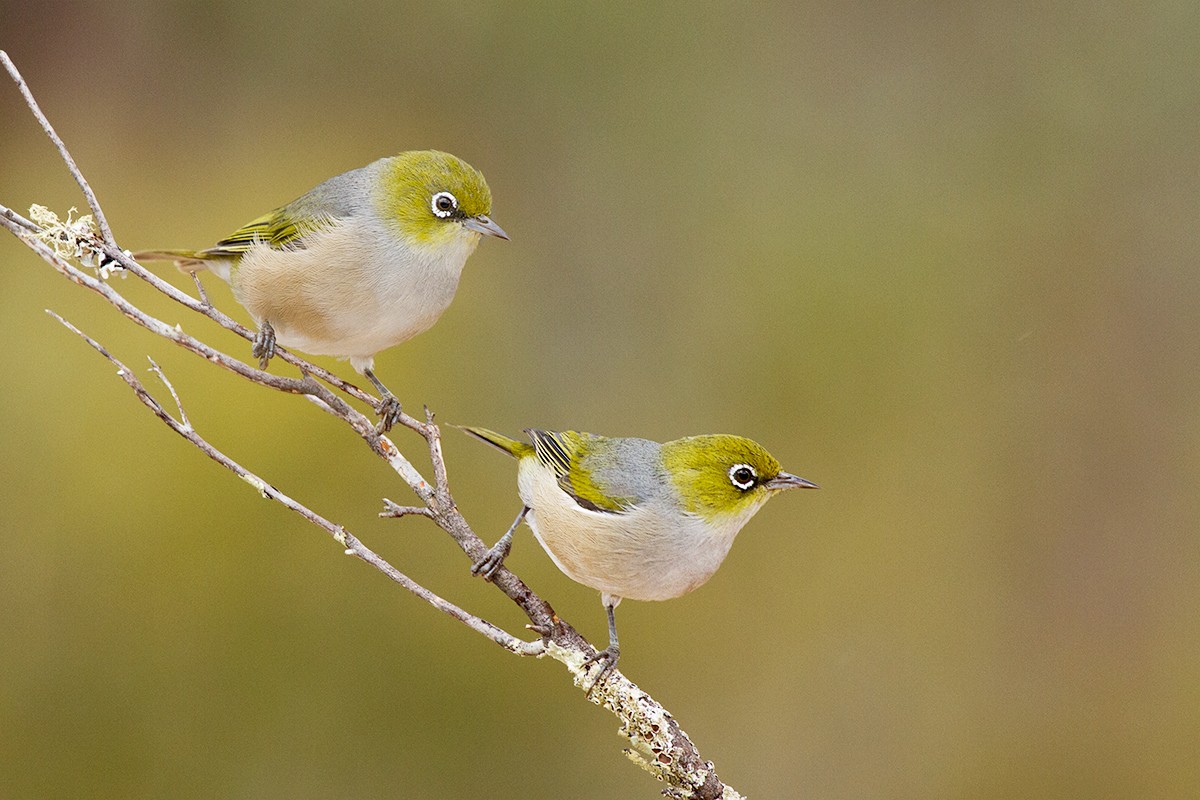Silvereye
A species of Typical white-eyes Scientific name : Zosterops lateralis Genus : Typical white-eyes
Silvereye, A species of Typical white-eyes
Botanical name: Zosterops lateralis
Genus: Typical white-eyes
Content
Description People often ask General Info
Description
A small bird 11 to 13 cm in length and around 10 g in weight, it has a conspicuous ring of white feathers around its eye. There are a number of plumage variations depending on the sub-species. Generally it has olive-green wings and either a grey or olive-green back, a lighter coloured throat - yellow or grey, flanks that range from chestnut to pale buff, and an undertail that may be white or yellow. Within Australia there are seasonal migrations and the ranges of the sub-species overlap. The other islands within its range tend to host only a single sub-species each so only one plumage variant is seen. 
Size
12 cm
Colors
Green
Yellow
Gray
White
Life Expectancy
12 years
Nest Placement
Shrub
Feeding Habits
Silvereye predominantly forages for insects, fruits, and nectar. Uniquely, silvereye can be an orchard pest, hinting at a preference for cultivated fruits alongside their natural diet.
Habitat
Silvereye's habitat encompasses a variety of vegetated areas within broad geographic regions where conditions are suitable, ranging from heathlands and shrublands to rainforests and mangroves. They are often found in places with moderate to dense vegetation cover, avoiding barren grasslands and the arid interior. Silvereye thrives in coastal and subcoastal zones and can adapt to both natural and human-altered environments, such as horticultural lands and urban gardens with tree presence. Their adaptability also extends from sea level to upland regions, indicating a wide altitude range tolerance.
Dite type
Insectivorous
People often ask
General Info
Feeding Habits
Bird food type
Bird Feeder Type

Small Tube Feeder

Platform
Behavior
Silvereyes breed in spring and early summer (mainly between September and December), making a tiny cup of grass, moss, hair, spiderweb, and thistledown, suspended from a branch fork in the outer reaches of small trees or shrubs. They lay two to four pale blue eggs, and two (or sometimes three) broods may be raised during each breeding season. The eggs hatch after about 11 days, and the young fledge after another 10 days. The juveniles are independent at 3 weeks and able to breed at 9 months. 
Distribution Area
The silvereye is native to Australia, New Zealand and the south-west Pacific islands of Lord Howe, New Caledonia, Loyalty Islands, Vanuatu, and Fiji. It is common to abundant throughout the relatively fertile south-west and south-east parts of Australia (including Tasmania and the Bass Strait islands), and through the well-watered coastal zone of tropical Queensland, including Cape York Peninsula The silvereye is liable to be found in any vegetated area, apart from open grasslands, within its distribution range, including forest, scrub, horticultural blocks and urban gardens. 
Species Status
Not globally threatened.
